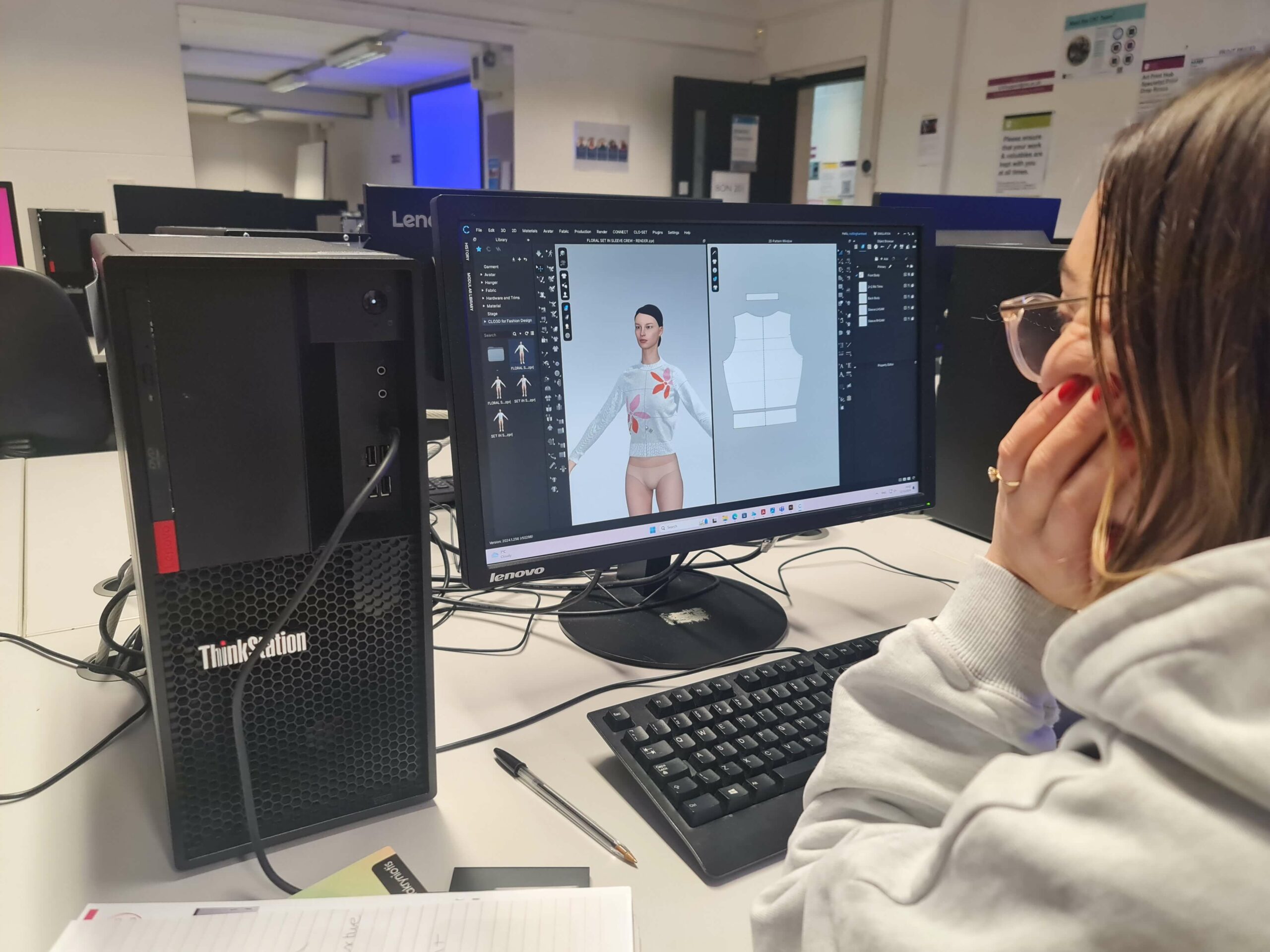The results of my recent LinkedIn poll posed a thought-provoking question to fashion professionals: “What is your biggest challenge in adopting digital fashion technologies?” The responses were telling, with 38% citing “skills” as their primary hurdle, followed closely by “time” and “cost” at 29% each. Unsurprisingly, “interoperability” came in at just 5%. It’s a familiar narrative, one that reveals the seismic shifts in our industry as we transition further into the digital era
But, skills. Let’s pause and reflect on this. Skills aren’t just a “tech problem” or a generational gap, it’s a hurdle we have encountered before.
The fashion industry is no stranger to evolution. Remember when manual fashion illustration dominated design studios, only to be displaced by the rise of digital tools like Adobe Illustrator? Or the time we transitioned from manual pattern cutting to digital systems like Gerber? These shifts weren’t instantaneous. They were met with scepticism, required upskilling, and relied on industry-wide education to close the gap. And yet, here we are…. a testament to fashion’s resilience and ability to adapt.So, the question isn’t “can we overcome this?” but rather, “how do we strategically overcome this?” What lessons can we take from our past transformations to bridge today’s skills gap in adopting digital fashion technologies like CLO3D, Browzwear, and others?
Lessons from the Past: How Did We Close the Gap?
- Industry-Led Education: Historically, industry leaders collaborated with education providers to embed relevant skills into curricula. As Adobe took the design world by storm, fashion schools introduced modules to teach digital illustration, ensuring students entered the workforce equipped with the tools of the trade. Similarly, the advent of digital pattern cutting drove colleges to incorporate Gerber training into their programs. The same strategy must be applied to 3D digital fashion, educational institutions must work hand-in-hand with the industry to prepare the next wave of talent.
- On-the-Job Training: When seismic shifts occur, businesses have often provided training to upskill their teams. The transition to digital pattern cutting didn’t happen solely in classrooms. Brands invested in hands-on training for their teams, ensuring they could adapt workflows in real time. Today, forward-thinking companies must offer workshops and masterclasses in CLO3D and other emerging tools to bring their workforce up to speed.
- Mentorship & Knowledge Sharing: During previous transitions, those who adopted new technologies early played a critical role in mentoring their peers. Knowledge-sharing sessions and collaboration became invaluable. We must cultivate this culture within the industry now… pairing early adopters of digital technologies with those looking to learn.
- Adaptable Learning Resources: The shift to digital tools saw the rise of self-guided learning. Brands like Adobe transformed their accessibility with tutorials, webinars, and forums, enabling professionals to learn on their own terms. Digital fashion technologies need to follow suit with accessible online resources to ensure learning is flexible and tailored to individual schedules.
The WHY: Informing the Road Ahead
One of the most overlooked aspects of upskilling is ensuring staff and students understand the “WHY.”
Why is it important to learn these technologies? Why should they invest time and energy into mastering these skills? And what’s in it for them?
This isn’t just about learning a new tool, it’s about futureproofing careers, driving sustainability, and staying competitive in an industry where change is constant. By adopting 3D design technologies, brands can:
- Reduce physical samples, cutting waste and aligning with sustainability goals.
- Streamline workflows, bringing products to market faster without sacrificing quality.
- Enhance collaboration, bridging the gap between creative and technical teams with clear, visual communication.
- Empower creativity, allowing designers to experiment and iterate in a low-cost, low-risk environment.
For students, the “why” is about employability. As brands increasingly demand digital expertise, having 3D skills becomes less of a luxury and more of a necessity. It’s about standing out in a competitive market and embracing the tools that will define the future of fashion.
The Call to Action: What Can Be Done?
To bridge the skills gap, we must think strategically, collaboratively, and inclusively. Here are the steps we can take:
- Incorporate Digital Fashion into Curriculum: Schools and universities need to embed 3D design and digital fashion technologies into their core fashion programs, just as they did with Adobe and Gerber.
- Offer Accessible Industry Training: Brands and training providers should make digital fashion courses more accessible, through online platforms, flexible scheduling, and subsidised programs.
- Create Industry Standards: Establish certifications in digital fashion technology to standardise skills across the industry, making it easier for employers to identify qualified talent.
- Promote Awareness and Engagement: Through forums, webinars, and social media, the industry must collectively raise awareness of the benefits of digital technologies, inspiring the next generation to embrace change.
- Lead by Example: Brands that adopt and champion digital technologies can pave the way for others to follow, showing the tangible benefits of these tools.
The path ahead is one that we have walked before, albeit with different tools and technologies. By remembering our history and working together as an industry, we can close the skills gap and continue to drive fashion forward. The key is action….so let’s not wait for the change. Let’s be the change.
